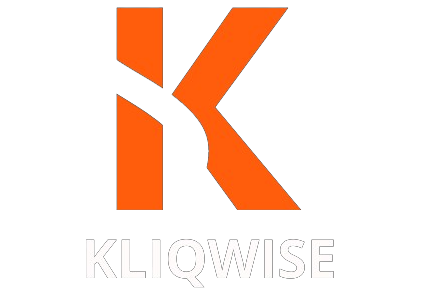Introduction
Content marketing has become an essential pillar of demand generation, helping brands build awareness, engage their target audience, and drive conversions. In today’s competitive landscape, businesses must deliver high-quality, relevant, and engaging content to nurture leads and move them through the sales funnel. This article explores the role of content marketing in demand generation, effective content types, measurement strategies, and tools to enhance content performance.
How High-Quality Content Builds Awareness and Nurtures Leads
- Building Brand Awareness
Content marketing plays a crucial role in making your brand visible to potential customers. By creating informative and valuable content, businesses can attract their ideal audience and establish thought leadership in their industry.
- SEO Optimization: Well-crafted content optimized for search engines helps brands rank higher on Google, increasing visibility and website traffic.
- Social Media Engagement: Sharing insightful articles and multimedia content on LinkedIn, Twitter, and Facebook helps brands reach a wider audience.
- Educational Value: Providing industry-related insights positions your brand as an authority, gaining trust and credibility.
- Lead Nurturing Through the Sales Funnel
Once prospects discover your brand, content marketing continues to guide them through different stages of the buying journey.
- Top-of-Funnel (TOFU): At this stage, educational blog posts, infographics, and explainer videos help attract potential leads and provide value without a direct sales pitch.
- Middle-of-Funnel (MOFU): Prospects who show interest can be nurtured through more in-depth content such as whitepapers, webinars, and case studies that address their pain points.
- Bottom-of-Funnel (BOFU): To convert leads into customers, brands can offer detailed product comparisons, free trials, and customer testimonials that reinforce purchasing decisions.
Types of Content That Drive Demand Generation
- Blog Posts & Articles
Writing in-depth, informative blog posts optimized with relevant keywords enhances SEO and attracts organic traffic. Blogs should be updated regularly and address common customer questions and industry trends.
- Videos & Webinars
Video content has skyrocketed in popularity due to its ability to engage audiences visually. Webinars, tutorials, and customer testimonials add credibility and keep potential customers interested.
- Whitepapers & eBooks
These long-form content assets offer deep insights into industry-specific challenges and solutions, making them perfect for capturing leads through gated content forms.
- Infographics
Visually appealing and easy to digest, infographics help communicate complex information quickly, making them highly shareable across social platforms.
- Case Studies & Testimonials
Demonstrating real-world success stories reassures potential buyers and showcases how your solution has helped similar businesses solve challenges.
Measuring Content Effectiveness
To ensure that content marketing efforts contribute to demand generation, marketers must track performance metrics.
Key Performance Indicators (KPIs)
- Traffic Metrics: Website visits, organic search performance, and referral traffic.
- Engagement Metrics: Average time on page, bounce rate, social shares, and comments.
- Lead Generation: Form submissions, email signups, and content downloads.
- Conversion Rates: Percentage of leads moving through the funnel and converting into customers.
- Return on Investment (ROI): Revenue generated compared to content production costs.
Tools for Measuring Content Performance
- Google Analytics – Tracks website traffic and user behavior.
- SEMrush & Ahrefs – Helps analyze keyword performance and competitor insights.
- HubSpot & Marketo – Marketing automation platforms for lead tracking and nurturing.
- BuzzSumo – Identifies top-performing content in your industry.
- Hootsuite & Buffer – Monitors social media engagement and content reach.
Examples of Effective Demand Generation Content Campaigns
- HubSpot’s Inbound Marketing Strategy
HubSpot, a leader in inbound marketing, leverages blog content, free eBooks, and webinars to attract and nurture leads. Their gated content captures high-quality leads while offering valuable insights.
- Salesforce’s Thought Leadership Webinars
Salesforce hosts live webinars featuring industry experts to discuss emerging trends and challenges. These webinars generate engagement and build trust with potential customers.
- ConvertKit’s Creator-Centric Approach
ConvertKit, an email marketing platform tailored for content creators, uses in-depth guides, case studies, and community-driven resources to educate and empower its audience. By prioritizing helpful and practical content, they have successfully built a loyal customer base.
- Hotjar’s Data-Driven Storytelling
Hotjar, a behavior analytics tool, creates detailed blog posts, heatmap analyses, and customer stories that help businesses improve website UX. Their ability to use real user insights as engaging content has positioned them as a go-to solution for user research.
- Ahrefs’ Educational SEO Content
Ahrefs, a leading SEO tool, attracts traffic through detailed, data-backed blog posts and YouTube tutorials that educate marketers on SEO best practices. By giving away valuable insights, they turn readers into long-term customers.
To Sum It Up
Content marketing remains one of the most powerful tools for demand generation in today’s digital world. By creating valuable content that attracts, educates, and nurtures leads, businesses can build long-term relationships and drive conversions. Tracking performance metrics and utilizing the right tools will ensure continuous improvement and sustainable growth.
To stay ahead, brands must refine their content strategies, focus on SEO-driven insights, and engage with audiences across multiple platforms. With the right approach, content marketing can become a revenue-driving force in your demand generation efforts.





